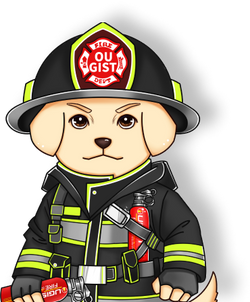In the event of a fire emergency, having a clear understanding of how to properly use a portable fire extinguisher can be the difference between a small manageable incident and a catastrophic disaster. These compact devices are designed to swiftly suppress fires, but using them correctly is crucial to ensuring your safety and that of others. In this blog post, we'll provide accurate step-by-step guidance on how to effectively use a portable fire extinguisher.

Step 1: Assess the Fire Type and Your Safety
Before attempting to use a fire extinguisher, it's vital to evaluate the situation. Make sure the fire is small and contained, and that it's safe for you to approach it. Confirm that you have the appropriate type of fire extinguisher for the fire class (A, B, C, etc.) – this information is usually indicated on the extinguisher's label.
Step 2: Position Yourself Safely
Stand at a safe distance from the fire, typically around 6 to 8 feet away. This distance ensures that you're not in immediate danger while aiming and discharging the extinguisher. Position yourself with an escape route behind you in case the fire becomes uncontrollable.
Step 3: Remember the PASS Technique

The PASS technique – Pull, Aim, Squeeze, Sweep – is a universally accepted method for using a portable fire extinguisher effectively:
-
Pull: Remove the safety pin from the extinguisher, breaking the tamper seal if applicable.
-
Aim: Point the nozzle of the extinguisher at the base of the fire. This is where the fuel source is located, and targeting it will help extinguish the flames more effectively.
-
Squeeze: Firmly squeeze the handle or lever of the extinguisher to release the extinguishing agent. Keep in mind that the agent might come out with force, so maintain a steady grip.
-
Sweep: Using a side-to-side sweeping motion, move the nozzle from side to side across the base of the fire. Continue sweeping until the flames are fully extinguished. Make sure to cover the entire affected area.
Step 4: Evacuate if Necessary
If the fire persists, grows rapidly, or becomes unmanageable, your safety takes precedence. Drop the extinguisher, move to your pre-established escape route, and evacuate the area immediately. Alert others and call emergency services.
Step 5: Aftermath and Safety Measures
Once the fire is successfully extinguished or you've evacuated the area, do not leave the scene unattended. Hot embers could reignite the fire. Also, remember that fire extinguishers have limited capacity, so it's advisable to call emergency services even after successfully using an extinguisher.
Step 6: Maintenance and Replacement
After using a fire extinguisher, even partially, it needs to be recharged or replaced. Additionally, make sure to inspect and maintain your extinguishers according to the manufacturer's recommendations to ensure they're always in proper working condition.


